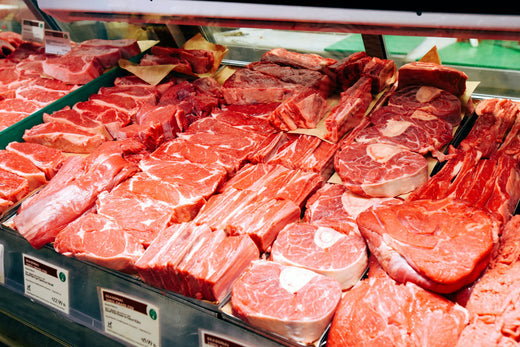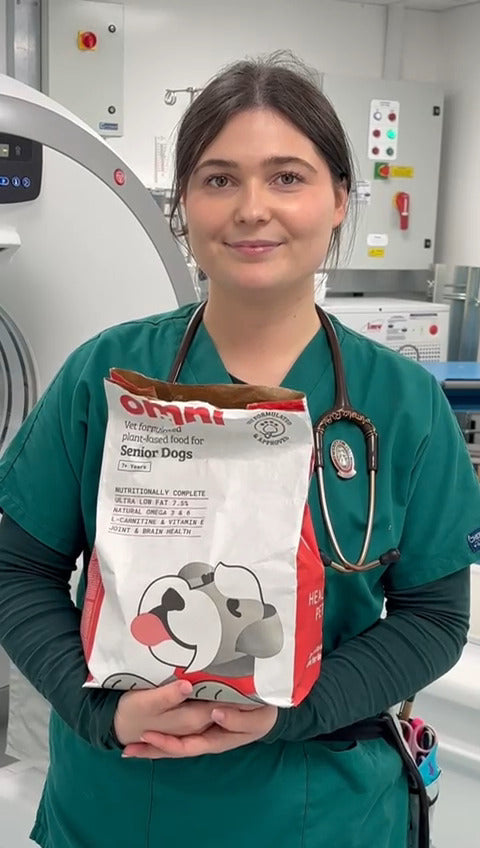The Hidden Dangers of All-Meat, Raw Meat and Home-Cooked Diets for Your Pets

As pet guardians, we want the best for our companions, from the most comfortable beds to the healthiest diets. In recent years, home-cooked meals and raw meat diets have gained popularity, seeking to provide high-quality nutrition. However, these dietary trends come with significant risks that can inadvertently compromise the health and well-being of our pets. Based on insights from the paper "Nutritional Risks and Consequences of Meat-Only Diets for Dogs and Cats," (1) let's explore the potential dangers associated with these diets and explore safer alternatives.
Home-Cooked and All-Meat Diets: The Risks of Nutritional Inadequacy
- Nutritional Deficiencies: One of the main concerns with home-prepared diets or following online recipes is the difficulty of achieving a balanced nutritional profile. Dogs and cats require vitamins, minerals, proteins, fats, and carbohydrates in very specific amounts and combinations, and without professional guidance, it’s easy to miss or under/overdose them. For example, a lack of calcium and phosphorus can cause skeletal issues, while insufficient vitamin A can impair vision and immune function.
- Imbalance of Nutrients: Even when high-quality ingredients are used, it is difficult to get the proportions right. For instance, an overabundance of certain nutrients, like vitamin D, can be toxic, while too much or too little protein can lead to kidney and liver problems. Achieving the right balance is crucial and often difficult without expert formulation and over time can inadvertently lead to health issues.
Raw Meat Diets: A Path to Potential Health Hazards
- Bacterial Contamination: Raw meat diets are particularly risky due to the potential for bacterial contamination. Raw meat can harbour harmful pathogens like Salmonella, E. coli, Listeria and Campylobacter which pose health risks not only to our pets but also to humans handling the food and waste. Like in people, infections can cause severe gastrointestinal issues and illness, and more worryingly, a recent study sampling 166 raw commercial dog food brands, found 18 types of salmonella, showing high level of antibiotic resistance (2).
- Nutritional Imbalances: Similar to home-cooked diets, raw meat diets can also create nutritional imbalances. While trends claim these diets are more "natural," more often than not, they fail to provide a balanced mix of nutrients. Raw meat alone cannot offer the complete nutrition that your dog needs.
- Bone Risks: Feeding raw bones can be dangerous, cooked, raw or ground. Bones can splinter, causing choking hazards, internal blockages, or punctures in the digestive tract. Even ground bone can lead to an improper calcium to phosphorus ratio, affecting bone health and growth.
The Consequences of Nutritional Imbalance
You need to supply the right nutrients- but what actually are the risks of malnutrition?
- Poor Growth and Development: Particularly important in puppies and kittens, during their vital growth stage. When fed unbalanced diets, we risk stunting growth and creating developmental problems including painful and weak bones (3).
- Weakened Immune System: Nutrient deficiencies can impair the immune system, making pets more susceptible to infections and diseases.
- Organ Dysfunction: Organs like the heart, liver, and kidneys rely on a balanced diet to function properly. Imbalances can lead to long-term organ damage.
- Skeletal Problems: Incorrect calcium and phosphorus levels can cause bone diseases, such as rickets or osteomalacia, leading to pain and mobility issues, as well as anorexia and poor general conditions.
Safer Alternatives: Balanced Commercial Diets
For most guardians, the safest and most effective way to ensure their pets receive complete and balanced nutrition is through high-quality commercial pet foods. These products are formulated by veterinary nutritionists to meet the dietary requirements of pets at different life stages and for specific health conditions. Look for brands that meet AAFCO (Association of American Feed Control Officials) or FEDIAF (European Pet Food Industry Federation) standards, which ensures the food is nutritionally adequate and regulated.
Consulting with your Vet
If you are considering a home-cooked or raw diet for your pet, it's essential to consult with a veterinary nutritionist. They can help formulate a balanced diet tailored to your pet’s specific needs, ensuring all nutritional bases are covered. Regular veterinary check-ups are also crucial to monitor your pet’s health and adjust their diet as needed.
Conclusion
While home-cooked and raw meat diets may seem appealing for their perceived natural and wholesome qualities, they come with significant risks and heartbreak that can easily be avoided. Ensuring a balanced, nutritious diet is fundamental to the well-being of your pets. At Omni, we aim to provide a high-quality diet that is FEDIAF compliant and formulated with Veterinary Nutritionists, targeted to specific life stages to keep your companions healthy and happy, and keep you, as their guardians informed.
(1)Tazerji, S.S., Elahinia, A., Akhtardanesh, B. and Kabir, F. Nutritional risks and consequences of meat-only diets for dogs and cats (2024) German Journal of Veterinary Research, 4(1). doi: 10.51585/gjvr.2024.1.0076.
(2)Weese, J.S., Rousseau, J. and Arroyo, L. (2005) 'Bacteriological evaluation of commercial canine and feline raw diets', The Canadian Veterinary Journal = La Revue Veterinaire Canadienne, 46(6), pp. 513–516.
(3)Kawaguchi, K., Braga III, I.S., Takahashi, A., Ochiai, K. and Itakura, C. (1993) 'Nutritional secondary hyperparathyroidism occurring in a strain of German shepherd puppies', The Japanese Journal of Veterinary Research, 41, pp. 89–96. Available at: https://doi.org/10.14943/jjvr.41.2-4.89.







 85 Great Portland Street, 1st Floor, London, W1W 7LT United Kingdom
85 Great Portland Street, 1st Floor, London, W1W 7LT United Kingdom